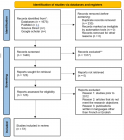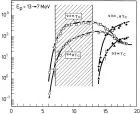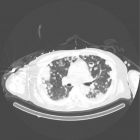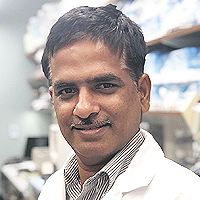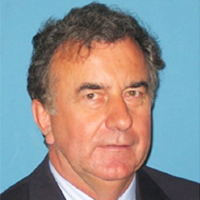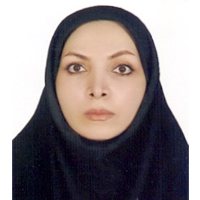Abstract
Research Article
Effect on Vitamin D status of Breastfeeding Infants after Vitamin D3 Supplementation during Breastfeeding Lactation: A double-blind randomized controlled trial
Sathit Niramitmahapanya*, Surasak Kaoiean, Varaporn Sangtawesin, Anusorn Patpanaprapan, Narisa K Bordeerat and Chaicharn Deerochanawong
Published: 04 August, 2017 | Volume 1 - Issue 1 | Pages: 006-014
Background: Vitamin D deficiency in pregnancy increases several risks of breastfed mothers. To prevent these adverse events, vitamin D supplementation during pregnancy and lactation is recommended, but suggested dose ranges vary.
Objective: To determine whether vitamin D3 1,800 IU/d supplementation in lactating mothers improves the vitamin D status of their breastfed infants.
Materials and Methods: A randomized, placebo–controlled trial with Thai pregnant women was conducted. Lactating mothers (n=72) and their breastfed infants with insufficient maternal 25 hydroxyvitamin D (25(OH)D) levels in the third trimester were randomly assigned to two groups, one of which received 1,800 IU/d vitamin D supplementation and the other a placebo. Maternal serum 25(OH)D during lactation, cord blood, and 6-week breastfed infant serum were measured using LC-MS/MS.
Results: Mean maternal age (±SD) was 27±5 years, and pre-gestational BMI was 22.29±5 kg/m2. Maternal serum 25(OH)D at baseline was 22.29±7.15 nmol/L. At 6 weeks, both maternal 25(OH)D and infant 25 (OH)D levels had increased significantly in the vitamin D supplement group of mothers and infants (68.30±15.40, 40.40±12.56 nmol/L) compared to those in placebo groups (55.15±13.57, 24.28±17.20 nmol/L) (p <0.001, p<0.001). The changes in infant 25(OH)D levels increased substantially in the vitamin D supplement group but decreased in placebo(17.49±16.27 ng/ml compared to -1.34±19.23 nmol/L in the placebo group, p<0.001). The change of maternal 25(OH)D were positively correlation to the change of 25(OH)D level in breastmilk mothers and infants by r=0.697, p<0.001 and r=0.379, p=0.003 respectively.
Conclusions: Vitamin D3 supplementation to breastfed mother during lactation can increase serum 25(OH)D level in Thai breastfed mother and infants. Further work is needed to determine the optimum duration of vitamin D supplementation to normalized breastfed infants with 25(OH)D level >75 nmol/L.
Read Full Article HTML DOI: 10.29328/journal.hcem.1001002 Cite this Article Read Full Article PDF
Keywords:
Breastfed infant; Vitamin D supplementation; Lactation
References
- Wayse V, Yousafzai A, Mogale K, Filteau S. Association of subclinical vitamin D deficiency with severe acute lower respiratory infection in Indian children under 5 y. Eur J Clin Nutr. 2004; 58: 563-567. Ref.: https://goo.gl/Z2SXwm
- Roth DE, Shah R, Black RE, Baqui AH. Vitamin D status and acute lower respiratory infection in early childhood in Sylhet, Bangladesh. Acta Paediatr. 2010; 99: 389-393.Ref.: https://goo.gl/1iKH8d
- Belderbos ME, Houben ML, Wilbrink B, Lentjes E, Bloemen EM, et al. Cord blood vitamin d deficiency is associated with respiratory syncytial virus bronchiolitis. Pediatrics. 2011; 127: e1513-e1520. Ref.: https://goo.gl/MSPfza
- Hollis BW, Wagner CL. Assessment of dietary vitamin D requirements during pregnancy and lactation. Am J Clin Nutr. 2004; 79: 717-726.Ref.: https://goo.gl/jGRCDZ
- Dawodu A, Absood G, Patel M, Agarwal M, Ezimokhai M, et al. Biosocial factors affecting vitamin D status of women of childbearing age in the United Arab Emirates. J Biosoc Sci. 1998; 30: 431-437.Ref.: https://goo.gl/6K5osP
- Gannagé-Yared MH, Chemali R, Yaacoub N, Halaby G. Hypovitaminosis D in a sunny country: relation to lifestyle and bone markers. J Bone Miner Res. 2000; 15: 1856-1862.Ref.: https://goo.gl/TuJeEu
- Seth A, Marwaha RK, Singla B, Aneja S, Mehrotra P, et al. Vitamin D nutritional status of exclusively breast fed infants and their mothers. J PediatrEndocrinolMetab. 2009; 22(3): 241-246. Ref.: https://goo.gl/Bh6R9s
- Dawodu A, Tsang RC. Maternal vitamin D status: effect on milk vitamin D content and vitamin D status of breastfeeding infants. AdvNutr. 2012; 3: 353-361. Ref.: https://goo.gl/4pRizF
- Yetley EA. Assessing the vitamin D status of the US population. Am J Clin Nutr. 2008; 88: 558-564. Ref.: https://goo.gl/QedwDQ
- Taylor JA, Geyer LJ, Feldman KW. Use of supplemental vitamin D among infants breastfed for prolonged periods. Pediatrics. 2010; 125: 105-111. Ref.: https://goo.gl/jsRL6K
- Perrine CG, Sharma AJ, Jefferds ME, Serdula MK, Scanlon KS. Adherence to vitamin D recommendations among US infants. Pediatrics. 2010; 125: 627-632. Ref.: https://goo.gl/yya7fL
- Pepper KJ, Judd SE, Nanes MS, Tangpricha V. Evaluation of vitamin D repletion regimens to correct vitamin D status in adults. EndocrPract. 2009; 15: 95-103.Ref.: https://goo.gl/5L88r9
- Binkley N, Gemar D, Engelke J, Gangnon R, Ramamurthy R, et al. Evaluation of Ergocalciferol or Cholecalciferol Dosing,1,600 IU Daily or 50,000 IU Monthly in Older Adults. J Clin Endocrinol Metab. 2011; 96: 981-988. Ref.: https://goo.gl/2yrjvb
- Niramitmahapanya, Kaoiean, Sangtawesin, Patpanaprapan, Bordeerat KN. Maternal Vitamin D3 Supplementation during Lactation Ameliorate Vitamin D Status of Breast-Fed Infants: Randomized Controlled Trial. Proceeding of the 97th Annual Meeting and Expo of Endocrine Society San Diego. 2015; 5-8. Ref.: https://goo.gl/6XmUuS
- Holick MF, Binkley NC, Bischoff-Ferrari HA, Gordon CM, Hanley DA et al. Endocrine Society. Evaluation, treatment, and prevention of vitamin D deficiency: an Endocrine Society clinical practice guideline. J ClinEndocrinol Metab. 2011; 96: 1911-1930. Ref.: https://goo.gl/9tccYh
- Jan Mohamed HJ, Rowan A, Fong B, Loy SL. Maternal serum and breast milk vitamin D levels: findings from the Universiti Sains Malaysia Pregnancy Cohort Study. PLoS One. 2014; 9: 100705. Ref.: https://goo.gl/Exj6BS
- Charatcharoenwitthaya N, Nanthakomon T, Somprasit C, Chanthasenanont A, Chailurkit LO, et al. Maternal vitamin D status, its associated factors and the course of pregnancy in Thai women. Clin Endocrinol (Oxf). 2013; 78:126-133.Ref.: https://goo.gl/8azsyV
- Ala-Houhala M, Koskinen T, Terho A, Koivula T, Visakorpi J. Maternal compared with infant vitamin D supplementation. Arch Dis Child. 1986; 61:1159-1163. Ref.: https://goo.gl/5T3QdH
- Catherine AR, Christine LT, Ann LY, Heather BDV. Dietary reference intakes for calcium and vitamin D. Washington, DC: The National Academies Press. 2011. Ref.: https://goo.gl/cDFbSv
- Birckbeck JA, Scott HF. 25-hydroxycholecalciferol serum levels in breast-fed infants. Arch Dis Child. 1980; 55: 691-695. Ref.: https://goo.gl/7vtyL8
- Lamberg-Allardt C, Salmenper L, Perheentupa J, Siimes MA. Maternal vitamin D supplementation during lactation-effect on infant and mother. In: Norman AW, Schaefer K, Grigoleit H-G, von Herrath D, eds. Vitamin D. Chemical, biochemical and clinical update. Berlin: Walter de Gruyter; 1985: 664-665.
- Rothberg AD, Pettifor JM, Cohen DR, Sonnendecker EWW, Ross FP. Maternal-infant vitamin D relationships during breastfeeding. JPediatr.1982; 101: 500-503. Ref.: https://goo.gl/QvYYHT
- Hillman L, Sateesha S, Haussler M, Wiest W, Slatopolsky E, et al. Control of mineral homeostasis during lactation: interrelationships of 25-hydroxyvitamin D, 24,25-dihydroxyvitamin D, 1,25-dihydroxyvitamin D, parathyroid hormone, calcitonin, prolactin and estradiol. Am J Obstet Gynecol. 1981; 139: 471-476. Ref.: https://goo.gl/NCvEvf
Figures:
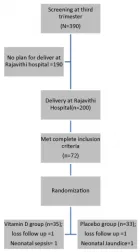
Figure 1
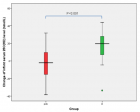
Figure 2

Figure 3
Similar Articles
-
Effect on Vitamin D status of Breastfeeding Infants after Vitamin D3 Supplementation during Breastfeeding Lactation: A double-blind randomized controlled trialSathit Niramitmahapanya*,Surasak Kaoiean,Varaporn Sangtawesin,Anusorn Patpanaprapan,Narisa K Bordeerat,Chaicharn Deerochanawong. Effect on Vitamin D status of Breastfeeding Infants after Vitamin D3 Supplementation during Breastfeeding Lactation: A double-blind randomized controlled trial. . 2017 doi: 10.29328/journal.hcem.1001002; 1: 006-014
-
Hyperprolactinaemia Contributes to Immunosuppressive and Corticosteroid Drug ResistanceIan C Chikanza*. Hyperprolactinaemia Contributes to Immunosuppressive and Corticosteroid Drug Resistance. . 2025 doi: 10.29328/journal.acem.1001031; 9: 001-009
Recently Viewed
-
Hepato-Pulmonary syndrome and Porto-Pulmonary Hypertension: Rare combination cause of Hypoxemia in patient with end-stage renal failure on Hemodialysis and hepatitis C Induced Decompensated CirrhosisAwad Magbri*,Mariam El-Magbri,Eussera El-Magbri. Hepato-Pulmonary syndrome and Porto-Pulmonary Hypertension: Rare combination cause of Hypoxemia in patient with end-stage renal failure on Hemodialysis and hepatitis C Induced Decompensated Cirrhosis. Arch Vas Med. 2017: doi: 10.29328/journal.avm.1001002; 1: 008-012
-
Deep Learning-Powered Genetic Insights for Elite Swimming Performance: Integrating DNA Markers, Physiological Biometrics and Performance AnalyticsRahul Kathuria,Reeta Devi,Asadi Srinivasulu*. Deep Learning-Powered Genetic Insights for Elite Swimming Performance: Integrating DNA Markers, Physiological Biometrics and Performance Analytics. Int J Bone Marrow Res. 2025: doi: 10.29328/journal.ijbmr.1001020; 8: 006-015
-
Pure Erythroid Leukemia: The Sole Acute Erythroid LeukemiaFauzia Shafi Khan*,Khalid Mahmood,Alia Ahmad. Pure Erythroid Leukemia: The Sole Acute Erythroid Leukemia. Int J Bone Marrow Res. 2017: doi: 10.29328/journal.ijbmr.1001001; 1: 001-005
-
Causal Link between Human Blood Metabolites and Asthma: An Investigation Using Mendelian RandomizationYong-Qing Zhu, Xiao-Yan Meng, Jing-Hua Yang*. Causal Link between Human Blood Metabolites and Asthma: An Investigation Using Mendelian Randomization. Arch Asthma Allergy Immunol. 2023: doi: 10.29328/journal.aaai.1001032; 7: 012-022
-
The alterations effects in phosphorus of erythropoietin and U-74389GC Τsompos*,C Panoulis,A Triantafyllou,CG Zografos,K Tsarea,M Karamperi,A Papalois. The alterations effects in phosphorus of erythropoietin and U-74389G. Int J Bone Marrow Res. 2020: doi: 10.29328/journal.ijbmr.1001012; 3: 021-026
Most Viewed
-
Impact of Latex Sensitization on Asthma and Rhinitis Progression: A Study at Abidjan-Cocody University Hospital - Côte d’Ivoire (Progression of Asthma and Rhinitis related to Latex Sensitization)Dasse Sery Romuald*, KL Siransy, N Koffi, RO Yeboah, EK Nguessan, HA Adou, VP Goran-Kouacou, AU Assi, JY Seri, S Moussa, D Oura, CL Memel, H Koya, E Atoukoula. Impact of Latex Sensitization on Asthma and Rhinitis Progression: A Study at Abidjan-Cocody University Hospital - Côte d’Ivoire (Progression of Asthma and Rhinitis related to Latex Sensitization). Arch Asthma Allergy Immunol. 2024 doi: 10.29328/journal.aaai.1001035; 8: 007-012
-
Causal Link between Human Blood Metabolites and Asthma: An Investigation Using Mendelian RandomizationYong-Qing Zhu, Xiao-Yan Meng, Jing-Hua Yang*. Causal Link between Human Blood Metabolites and Asthma: An Investigation Using Mendelian Randomization. Arch Asthma Allergy Immunol. 2023 doi: 10.29328/journal.aaai.1001032; 7: 012-022
-
An algorithm to safely manage oral food challenge in an office-based setting for children with multiple food allergiesNathalie Cottel,Aïcha Dieme,Véronique Orcel,Yannick Chantran,Mélisande Bourgoin-Heck,Jocelyne Just. An algorithm to safely manage oral food challenge in an office-based setting for children with multiple food allergies. Arch Asthma Allergy Immunol. 2021 doi: 10.29328/journal.aaai.1001027; 5: 030-037
-
Snow white: an allergic girl?Oreste Vittore Brenna*. Snow white: an allergic girl?. Arch Asthma Allergy Immunol. 2022 doi: 10.29328/journal.aaai.1001029; 6: 001-002
-
Cytokine intoxication as a model of cell apoptosis and predict of schizophrenia - like affective disordersElena Viktorovna Drozdova*. Cytokine intoxication as a model of cell apoptosis and predict of schizophrenia - like affective disorders. Arch Asthma Allergy Immunol. 2021 doi: 10.29328/journal.aaai.1001028; 5: 038-040

If you are already a member of our network and need to keep track of any developments regarding a question you have already submitted, click "take me to my Query."






